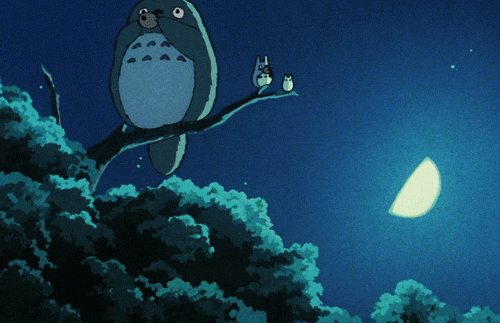I recently learned that Emmanuel College grants free HBO Max to all of its students who live on campus. Seeing as I’ll only be an Emmanuel student for a month or so longer, I’ve been trying to power through the catalog and get as many interesting movies in my system before I graduate and the paywall goes up.
There’s been a lot of comfort in this new well of interesting and often excellent movies. But lately, some other fears about the state of the world have been hanging over me. Ukraine. Afghanistan. Yemen. Palestine. Haiti. The ongoing pandemic. The endless slew of anti-gay and anti-trans laws across the country. The climate crisis. As I prepare to leave college and become a full-fledged adult, everything about the world feels so precarious, like one wrong move will make the sky fall and at the same time I am too small and worthless to affect any meaningful change.
Perhaps it’s lucky for me that HBO Max introduced me to a filmmaker who knows those feelings well, and has been plumbing them for decades in his art. I’m talking about Hayao Miyazaki—the legendary Japanese animator and director. At 21, I’ve finally sat down and watched (most of) his movies, and I was taken aback by how well they capture everything I’m feeling. This is going to be a looser piece than what I usually write; it’s basically just a free write about Ghibli movies that poor Alyssa will edit down into something publishable later (thank you, Alyssa).
The first two Hayao Miyazaki movies available on the streamer are Nausicaa of the Valley of the Wind and Castle in the Sky, and in an eerie reflection of our own time the threat of nuclear war and what it would do to the planet and people hangs over both movies. It frightened me to watch a nuclear armed autocrat invade a sovereign nation in real life and then turn to fiction and find humans struggling to rediscover balance with the earth after a nuclear war in Nausicaa. It only got eerier with Castle in the Sky which follows two kids, Sheeta and Lazu, on their way to the legendary city of Laputa: Sheeta’s homeland of advanced technology and scientific wonders. Along the way, they are chased by governments and mercenaries who want Laputa’s riches and power for themselves. But, when Sheeta and Pazu arrive, they find that Laputa’s human population has since annihilated itself in a destructive offscreen war. The only “life” that remains in Laputa are a few animals and robots who’ve found a quiet but chilling peace on what’s left of the land. The climax of the film sees Pazu, Sheeta, and the friends they’ve made struggling against the powers that have pursued them from introducing Laputa’s weapons to the world below. Sheeta wants nothing more but to go home, but finds she has no home to return to. She then has to fight for her nation’s legacy, refusing to let it be remembered for the destruction.
Ghibli movies are famous for their idyllic pastoral imagery and wholesome, joyful moments between friends, family, and loved ones. But the specter of man-made horrors hangs over basically every movie in their catalog I’ve seen so far—except for arguably Kiki’s Delivery Service and My Neighbor Totoro. Having grown up during World War II in the only country that’s ever seen the business end of a nuclear explosion, Miyazaki despises war and speaks out against it every time he gets the opportunity. He famously refused to come to the Oscars in 2003, when Spirited Away won Best Animated Feature, because he was appalled by the “War on Terror” America was launching in Iraq (not too dissimilar from what Putin is trying to do in Ukraine right now). Howl’s Moving Castle, a children’s novel I read in middle school that has exactly one use of the word “war” was transformed into a passionately anti-war feature about how people in power steal our lives and humanity from us, cutting us off from the best versions of ourselves. Even Porco Rosso, a wholesome and straightforward – if strange – story of an Italian man who’s been turned into a pig who really likes to fly airplanes is set during Italy’s descent into fascism on the onset of World War II.
Other Ghibli movies tap into the fears we share about climate change and environmental catastrophe. Princess Mononoke, Spirited Away, and Ponyo all follow the relationships between a human kid and a supernatural entity closely tied to the planet. Princess Mononoke is famous for its refusal to make any one character “the bad guy,” but the closest it gets is probably Lady Eboshi, the leader of an industrializing human settlement on the outskirts of a mystical forest populated by gods and spirits. She doesn’t want to harm the planet any more than anyone else, but her people need jobs. They get their jobs from harming the forest, and then she has to protect her community when the gods and spirits (justifiably) respond likewise..
With Lady Eboshi and the characters in Iron Town, I’m reminded of an anecdote my mother told me once. She grew up during the Vietnam War, and her mother worked for Boeing, the airplane company that distributed death in that conflict and many others. My young mother would watch cities turn to rubble and families try to flee, and she would have to reconcile that their suffering is what put food on her own dinner table. The cycle keeps escalating, and it will only lead to more drastic consequences the longer it goes on. But for now, all we have is this cycle. I worry about my own future once I get out of college and into the working world I’ll be entering. What if the only way I can support myself rests on making the world worse for someone else? What gives me the right to a decent life built on other people’s pain? And how long can such a system last before a reckoning strikes?
Princess Mononoke offers no clear answers to such a question. In the end, because it’s a fantasy movie, the rampaging monster humans created out of the world is granted peace. Our hero moves in with the humans to act as an advocate for the forest, but the title character cannot forgive humankind. It doesn’t pretend to restore “balance,” or talk about what such a thing even means in a realistic setting. But it does hold up a mirror to the systems we’ve created, and gives us the language to talk about them. Above all, the movie refuses to accept cynicism or hate as acceptable stopping points. That, as the film demonstrates, only gives the problems more space to fester. Only by looking at our world and ourselves clearly do we have a chance at reconciliation.
Then there are the two smaller-scale Miyazaki movies, which relate to the problems I deal with more often. My Neighbor Totoro is a light, cheerful, whimsical film about two little girls, Satsuki and Mei, who move to a new house and befriend a goofy forest spirit who lives nearby. But even in this smiling little world of childlike wonder, the same shadows that always haunt Miyaaki movies recur. Our heroines’ mother is hospitalized with some unknown health problem. For the past two years, health and the very real possibility of death has followed all of us around. I can say with certainty that nearly everyone who reads this article has lost at least one loved one to Covid-19. Mei and Satsuki have to come to terms with the fact that they may not have a mother by the time the credits roll, and Satsuki in particular tries to act more “adult” by keeping her feelings in. By capping her fears, she believes she’s setting an example for her more off-the-cuff kid sister and helping her community by not giving them something else to worry about. But Satsuki cannot pretend to be an adult forever, and eventually explodes at Mei. It is at that moment that she realizes that managing her emotions won’t work if she’s always trying to hide them. She takes off the adult mask, and empowered by the joy and playfulness represented by Totoro, the family reunites.
These films never minimize the emotions of their characters or the problems of their worlds. Nor do their problems magically resolve by the story’s end (except for arguably Totoro). Instead, the characters look within and find the strength to adapt. They mature, learning to manage their emotions and stand up for a better world. Maybe I can learn from these stories and apply their lessons to my own life.


